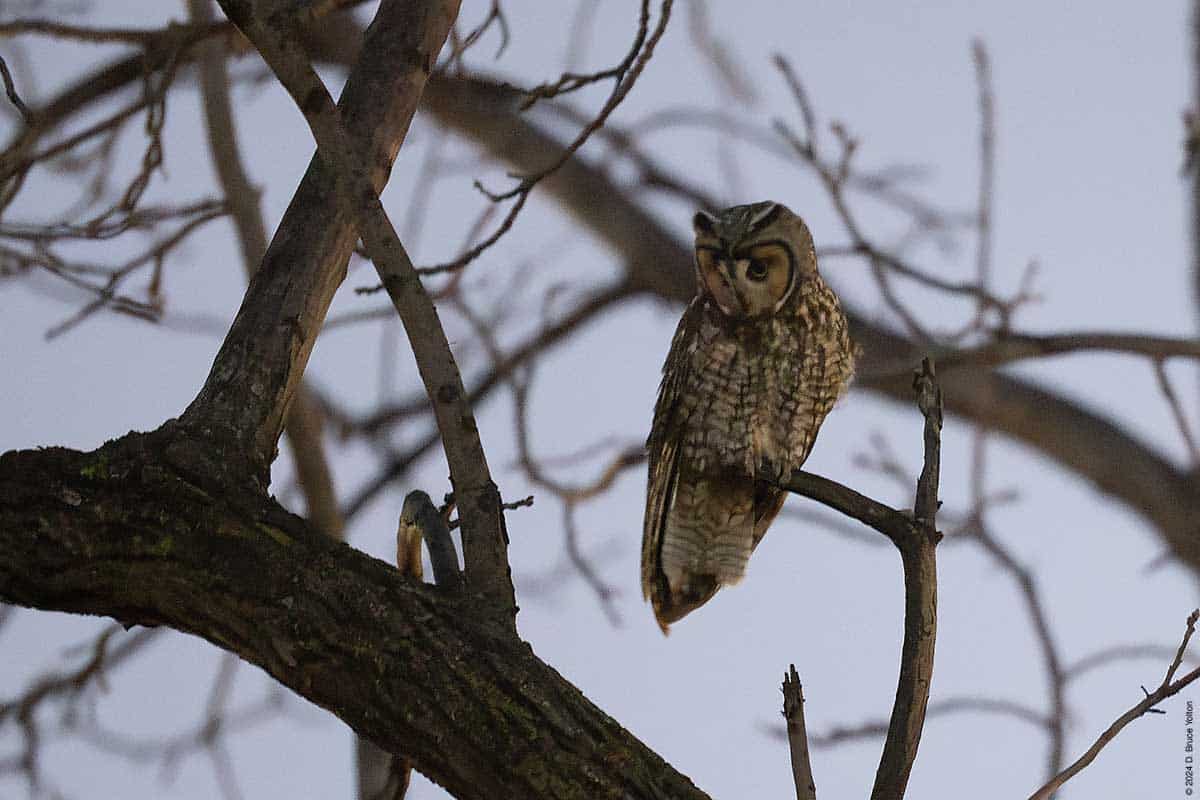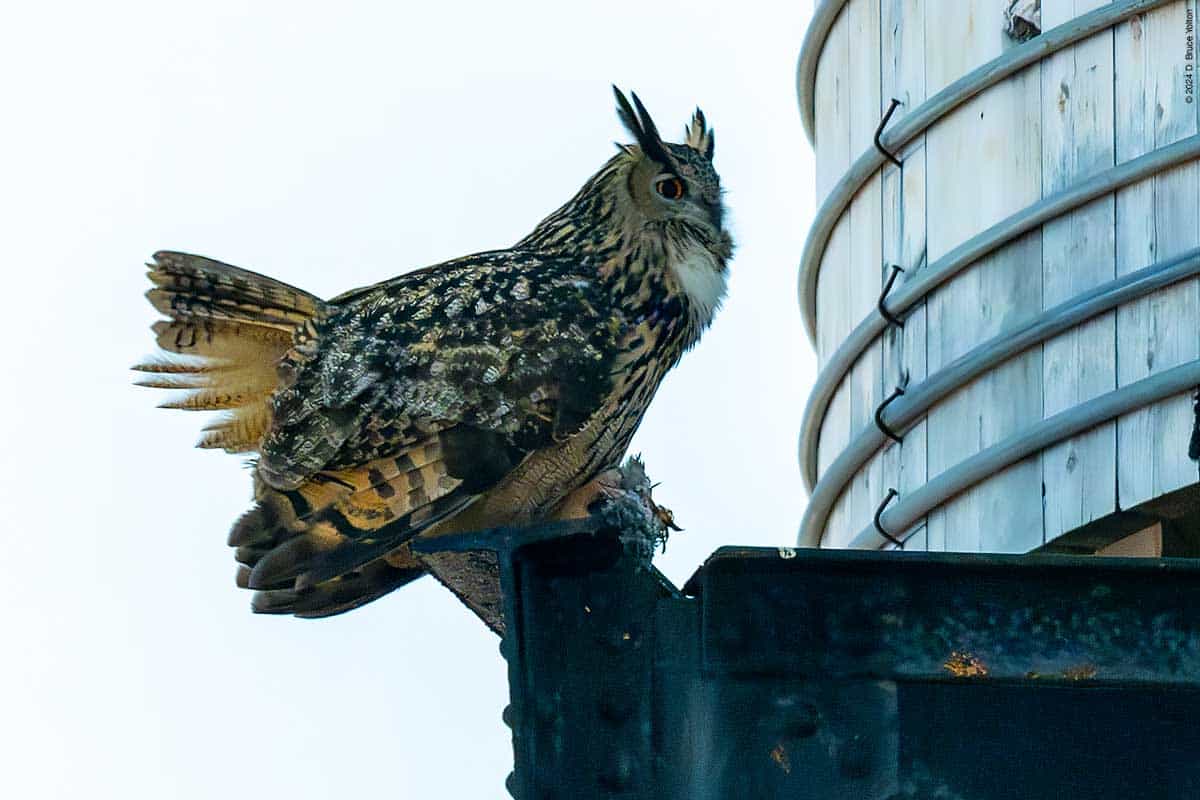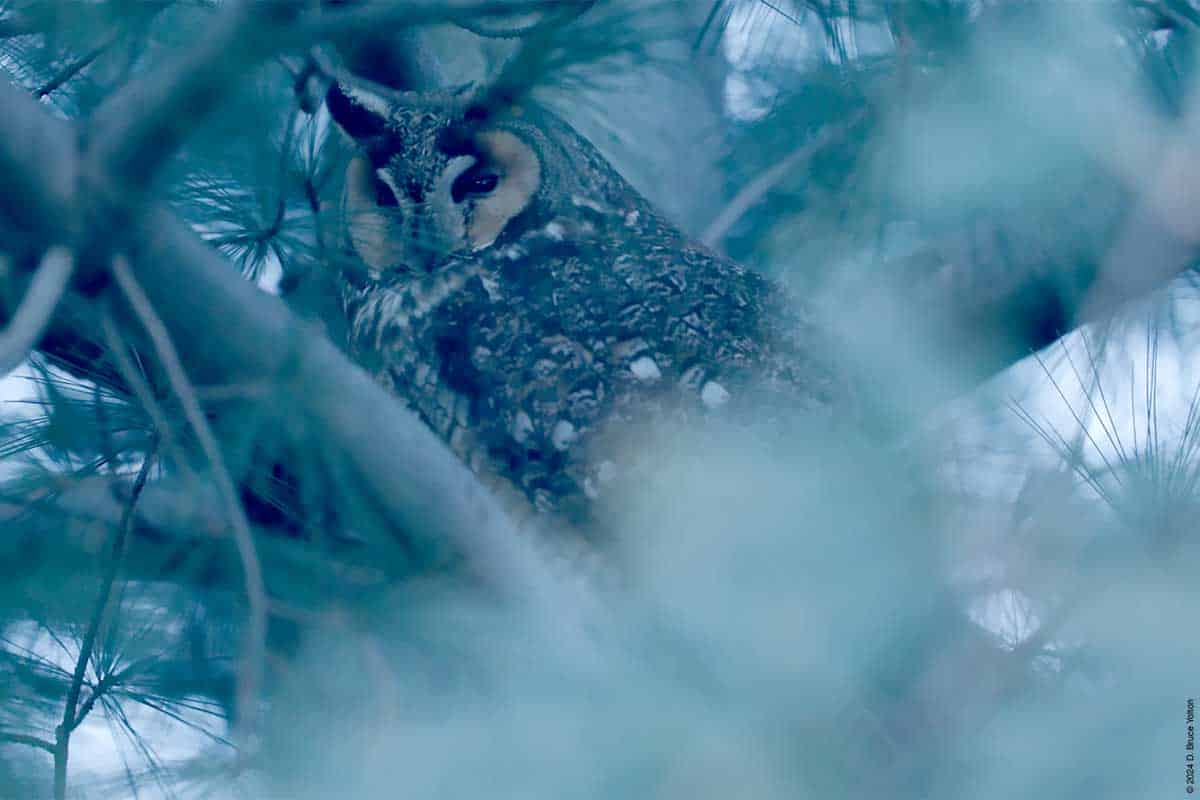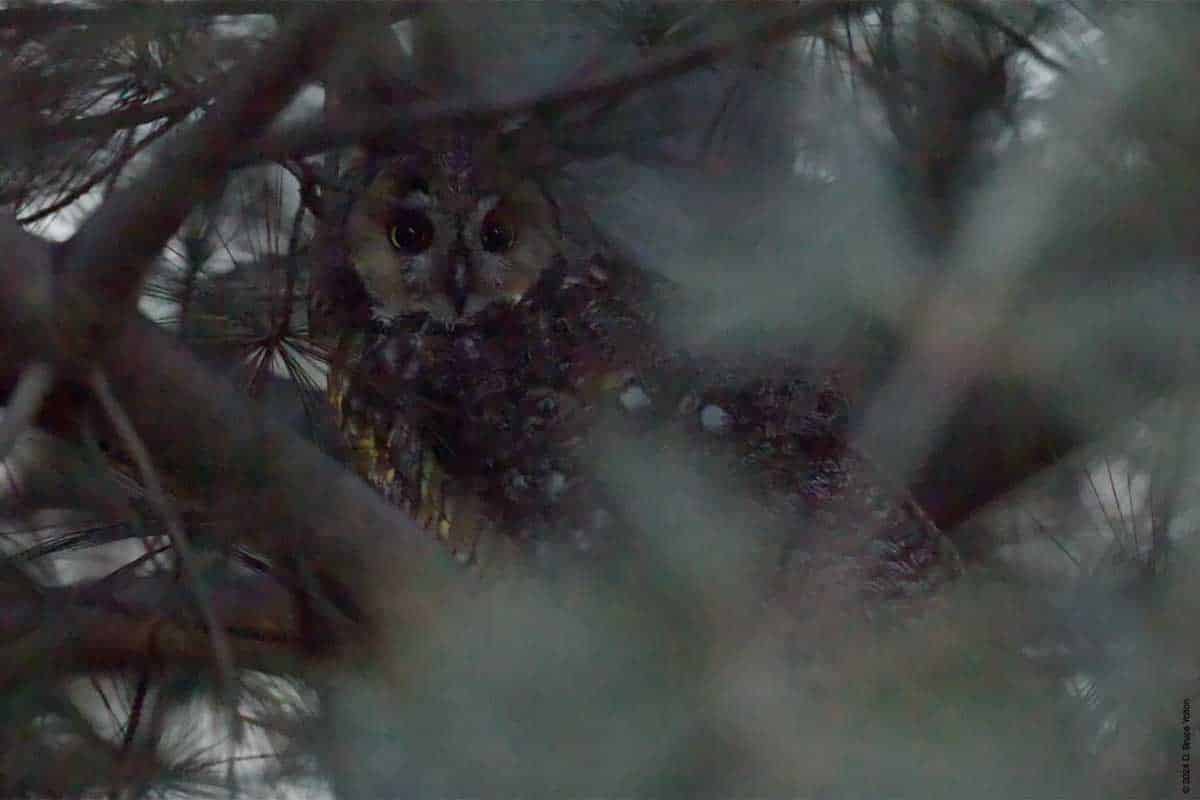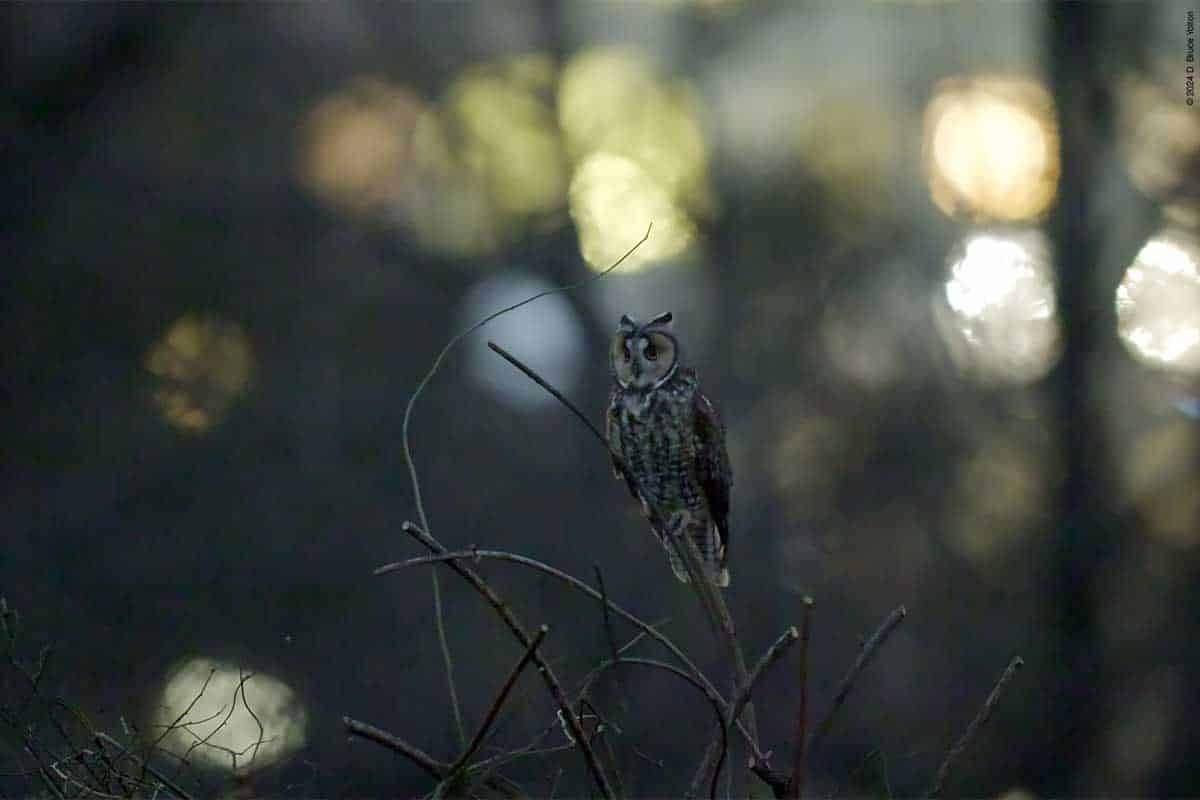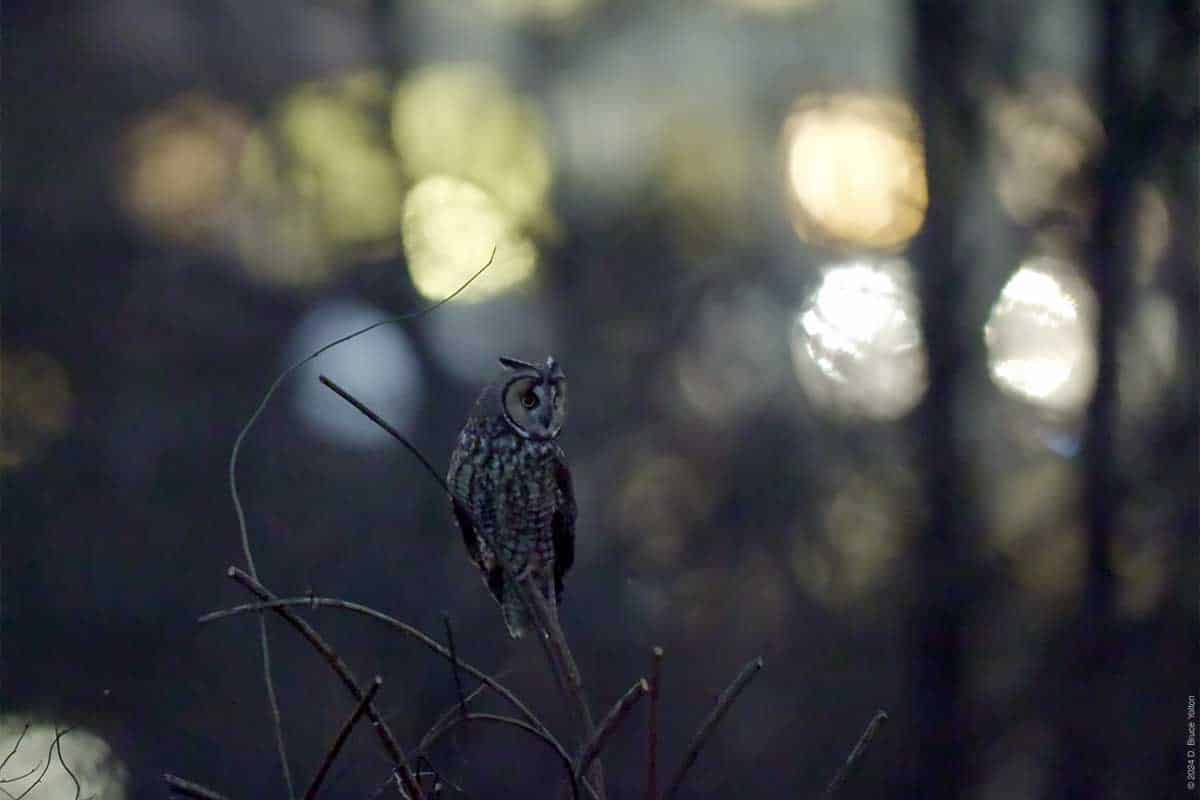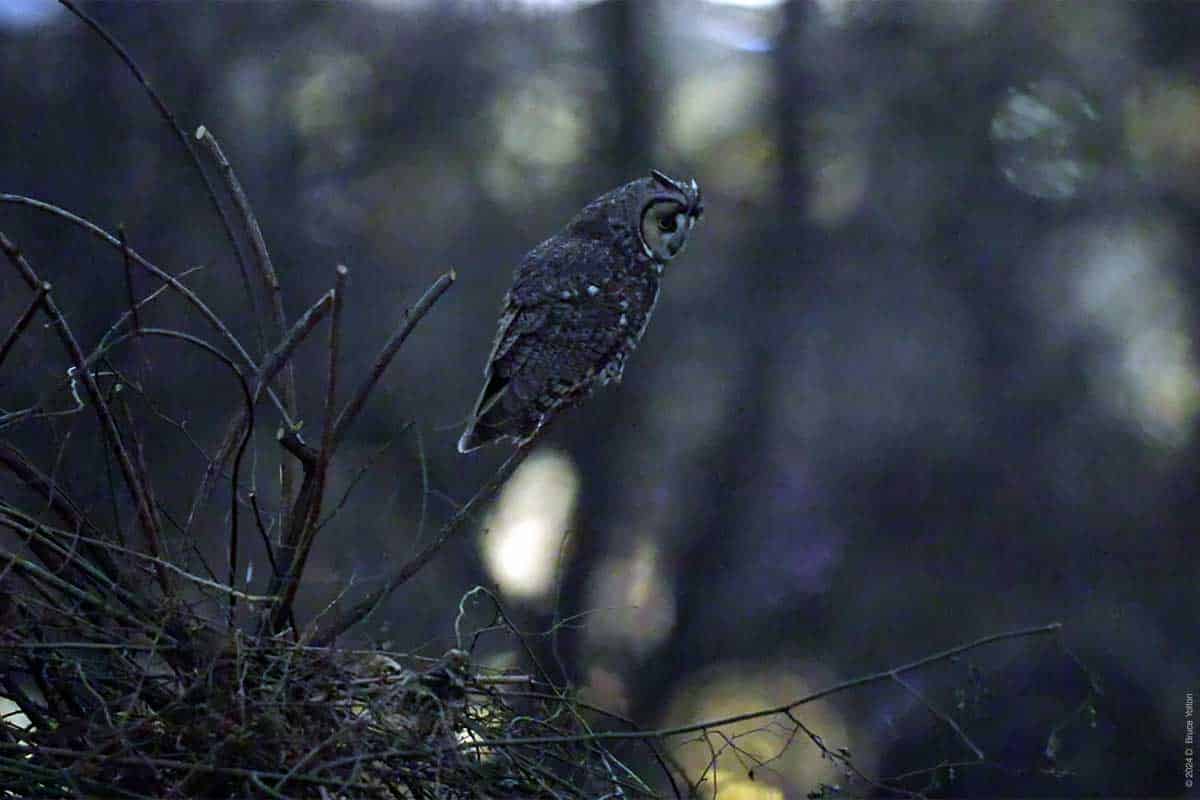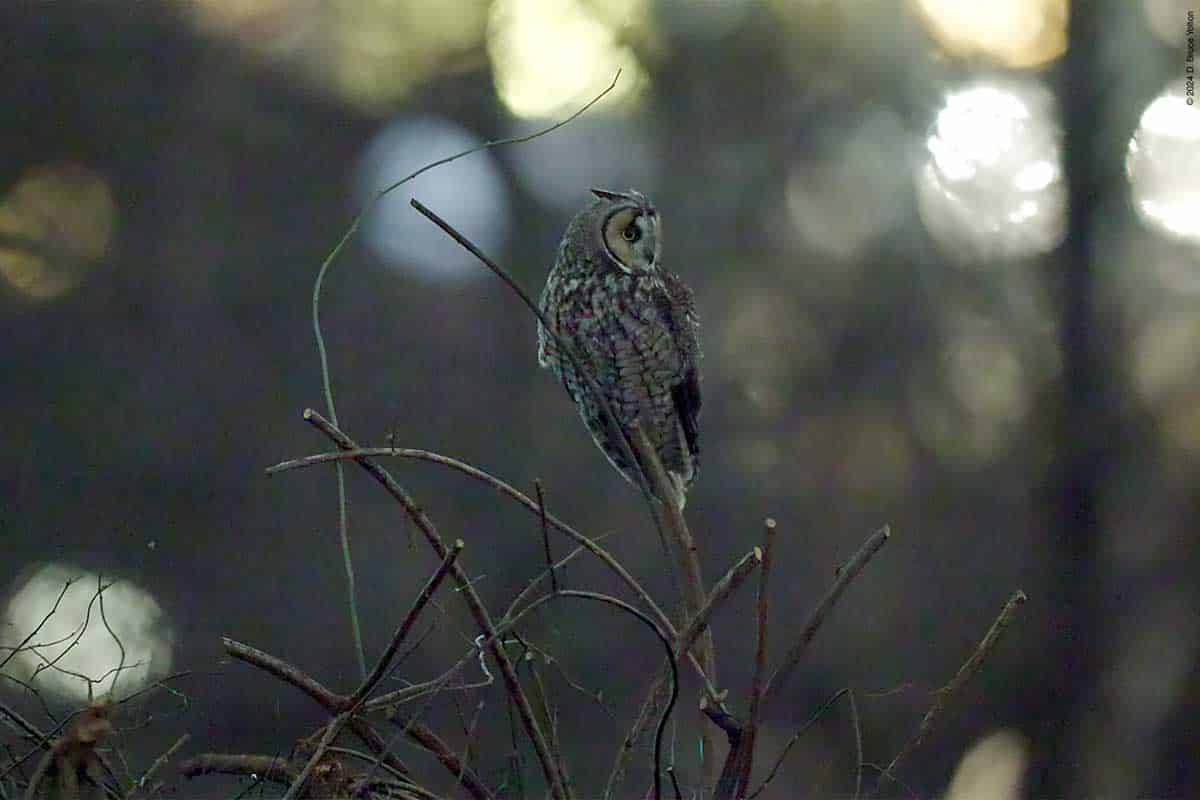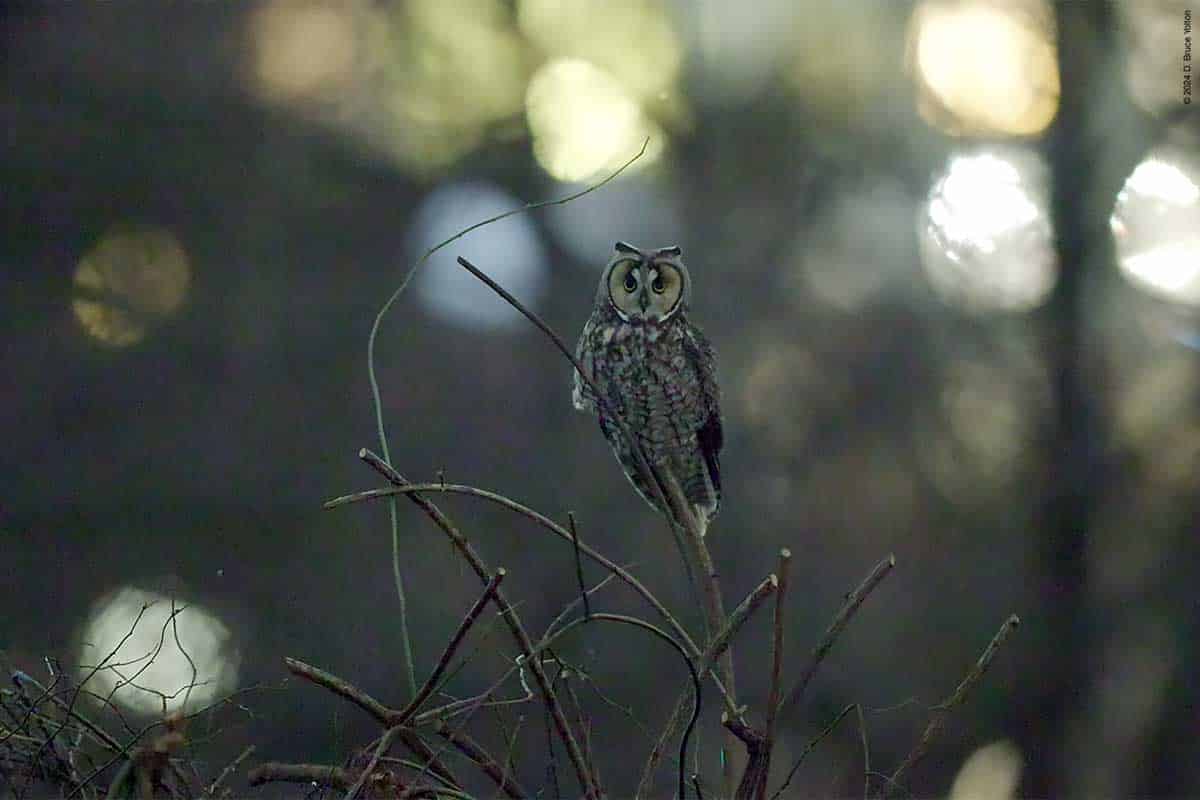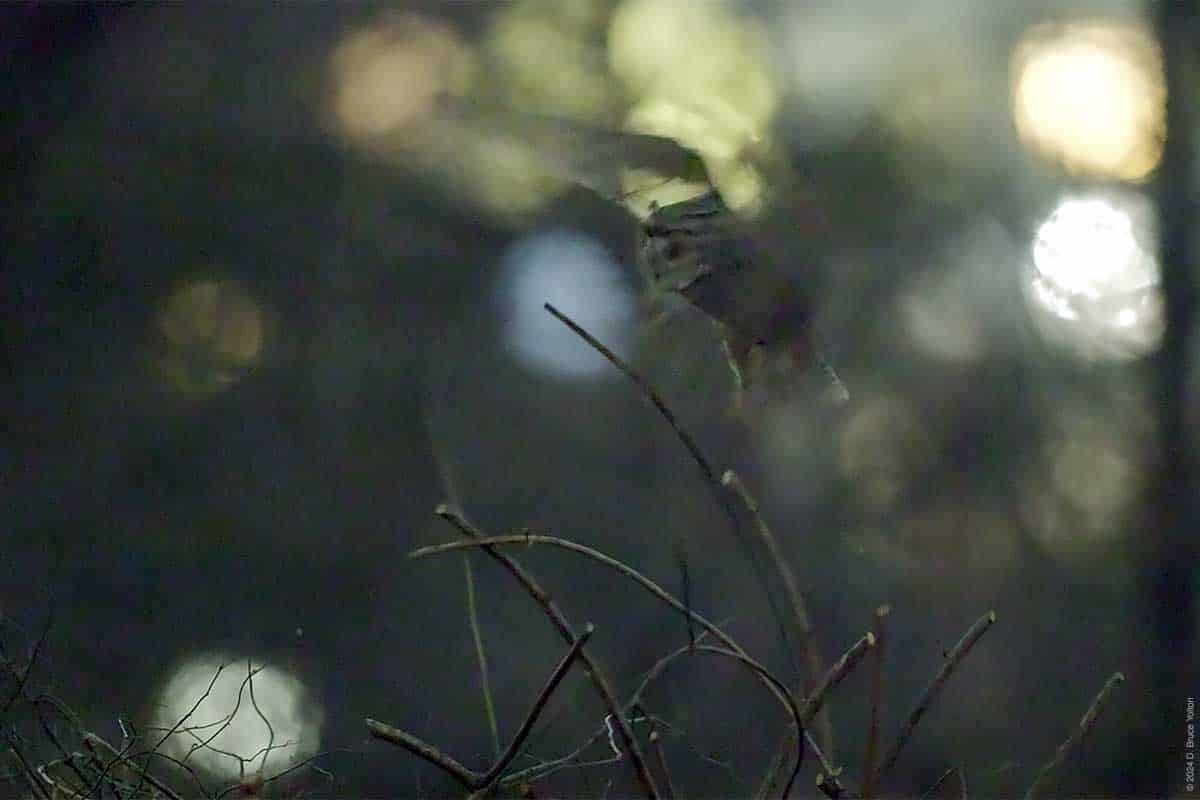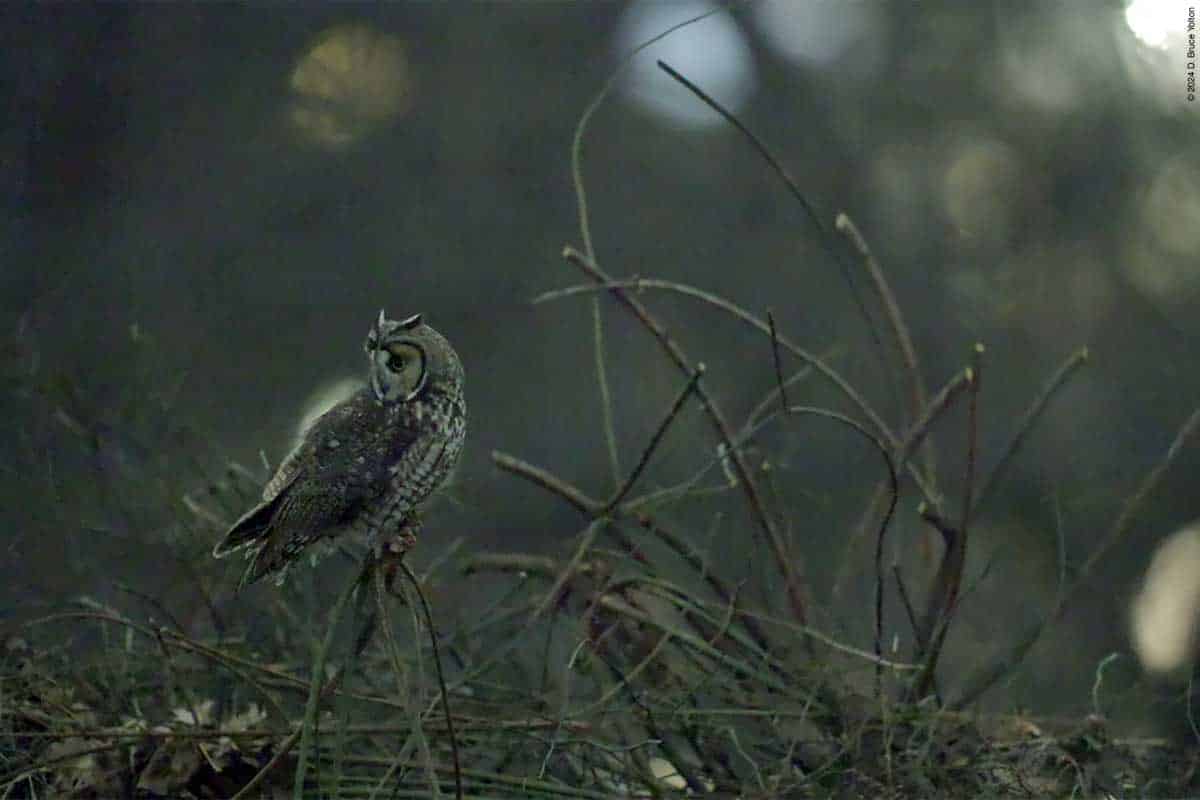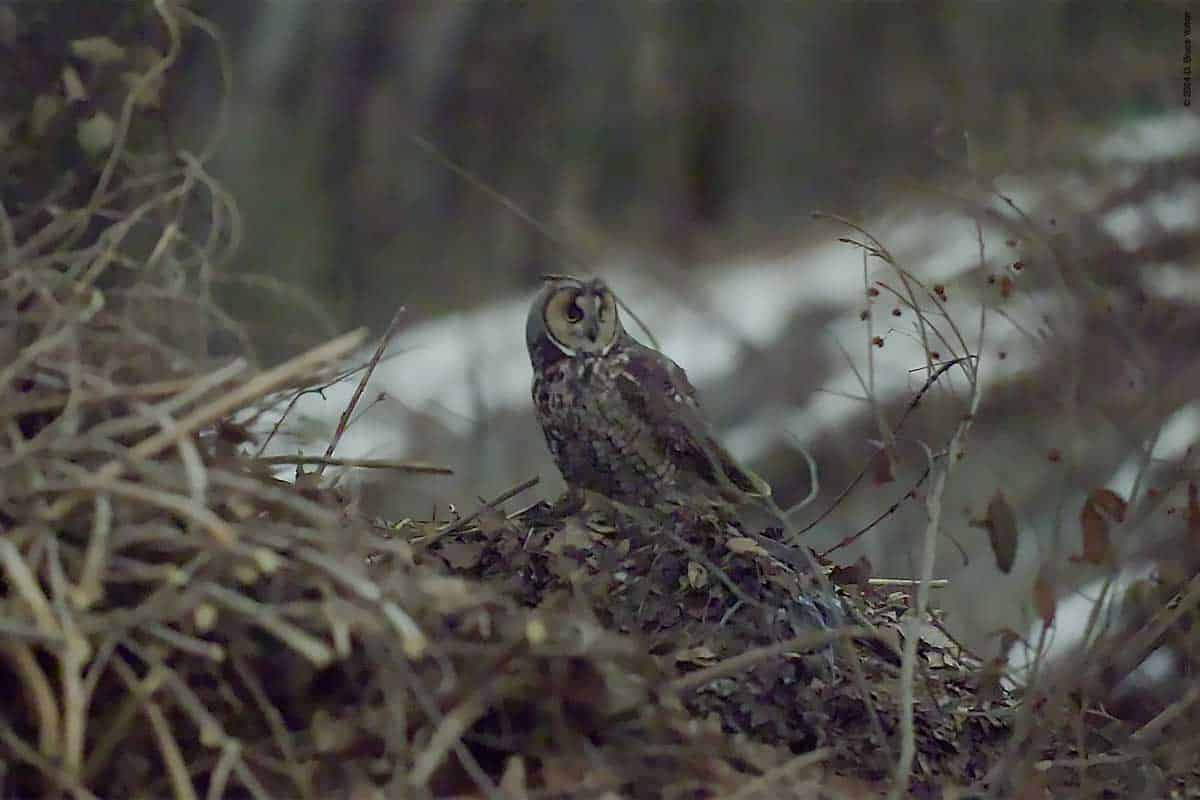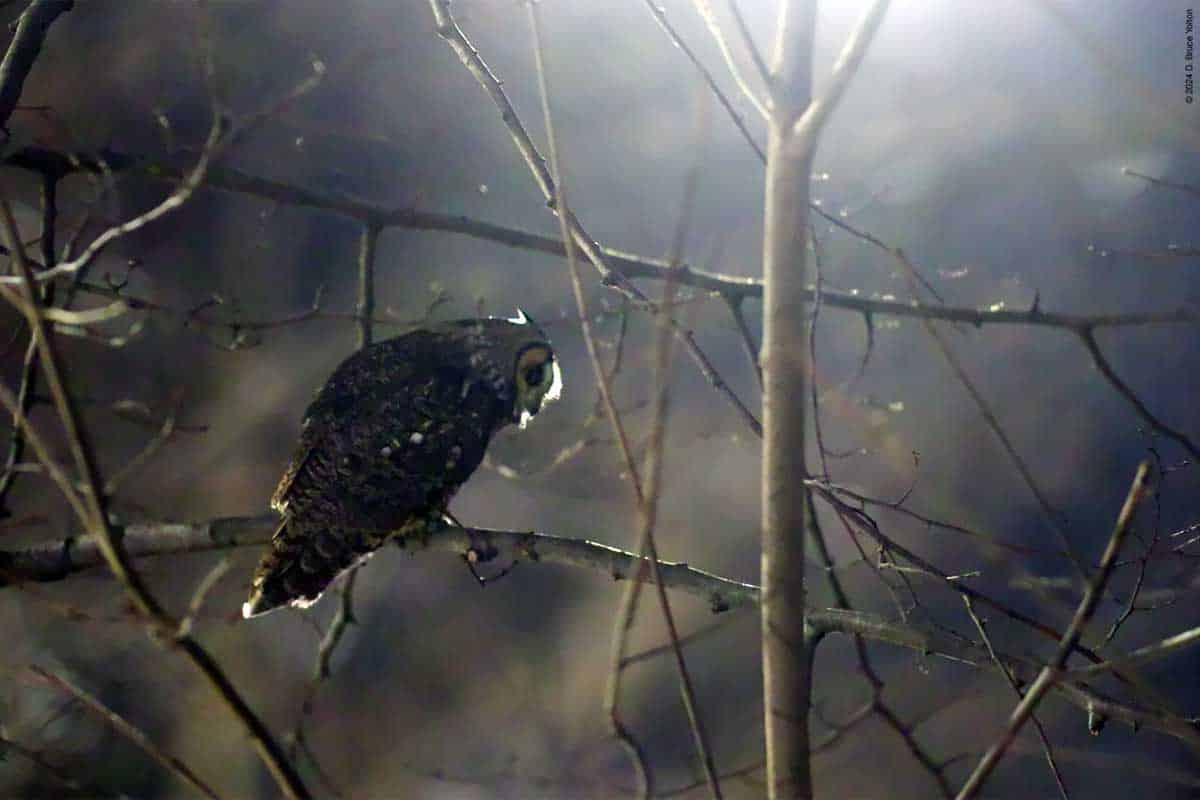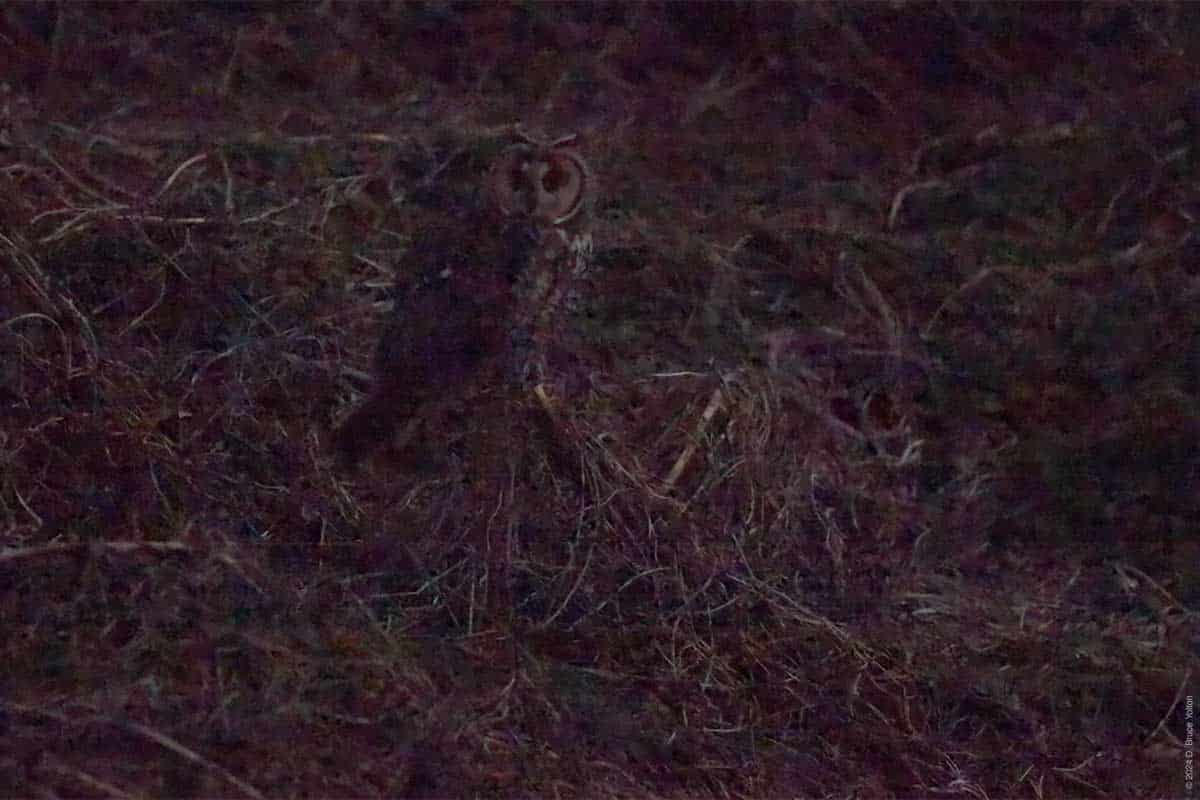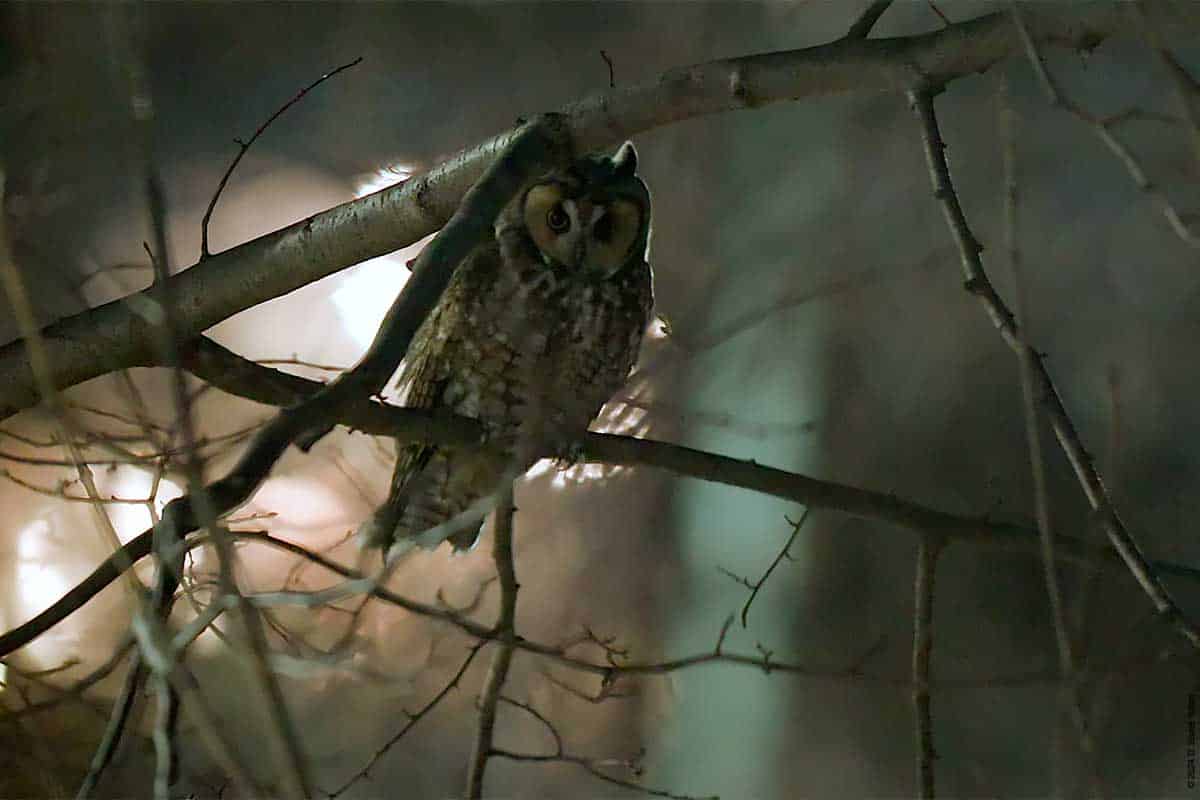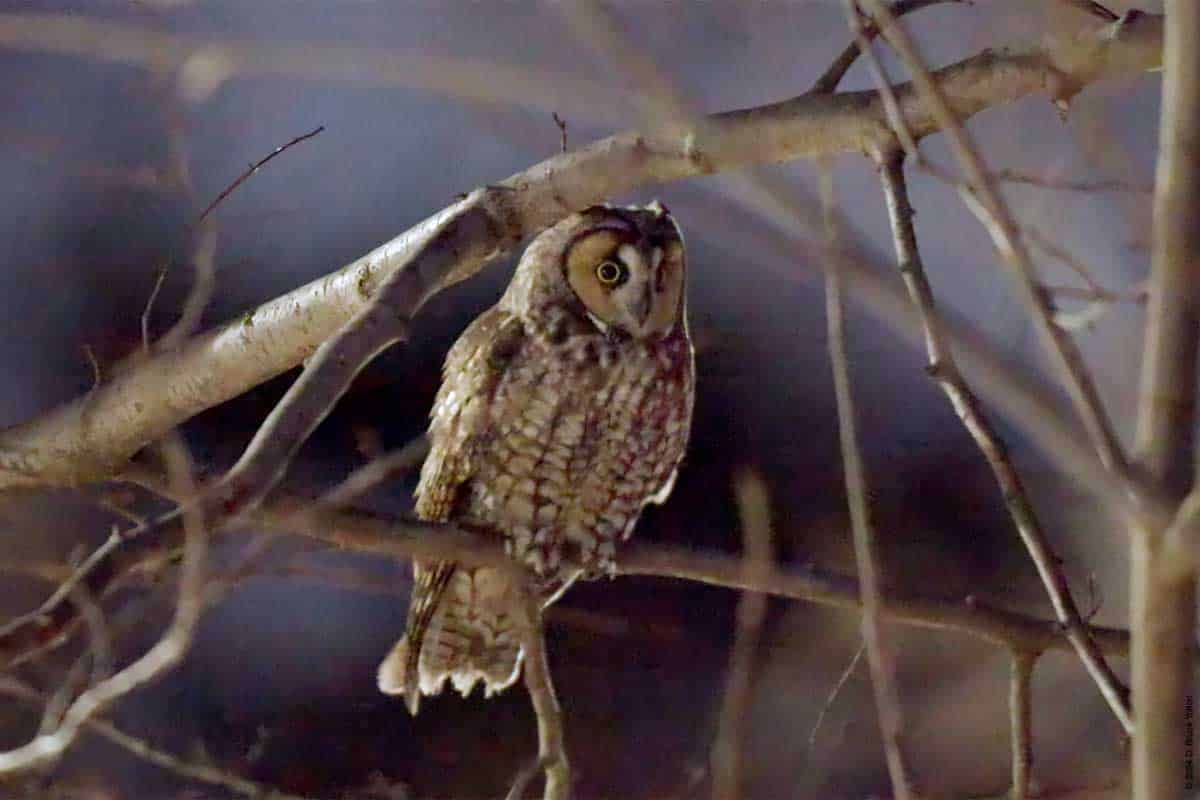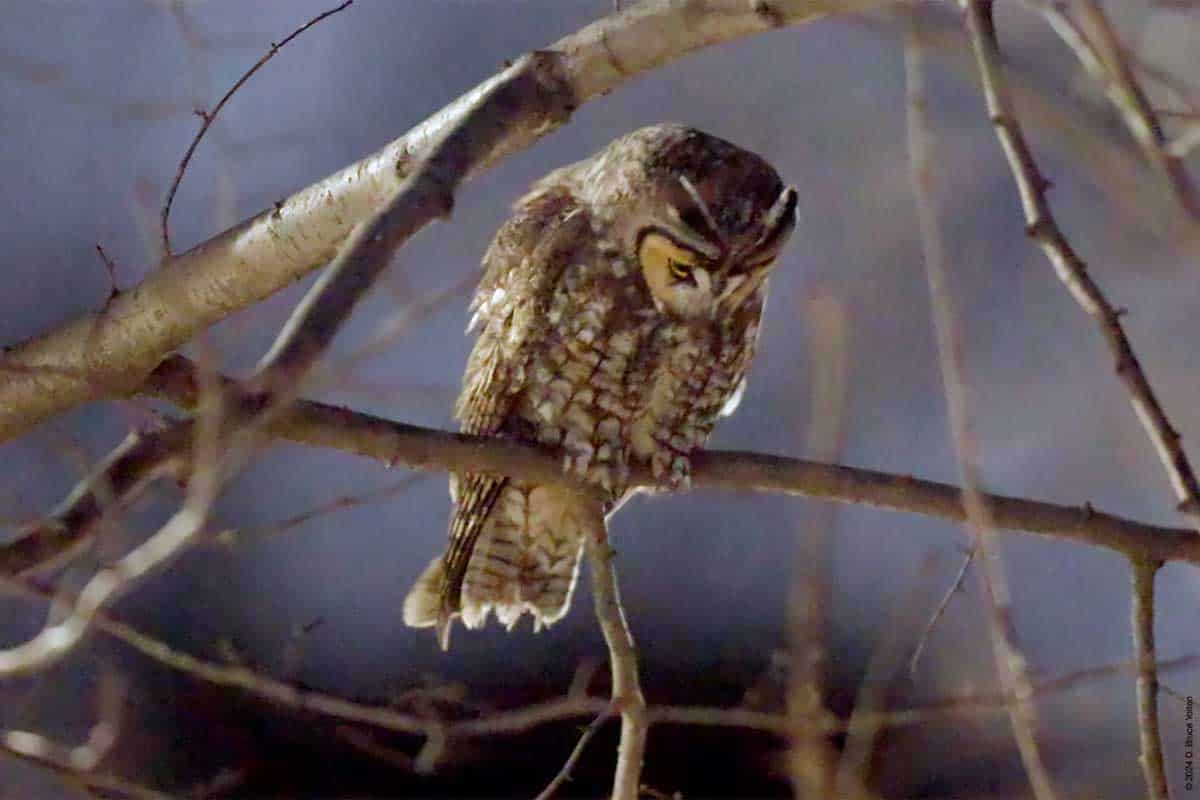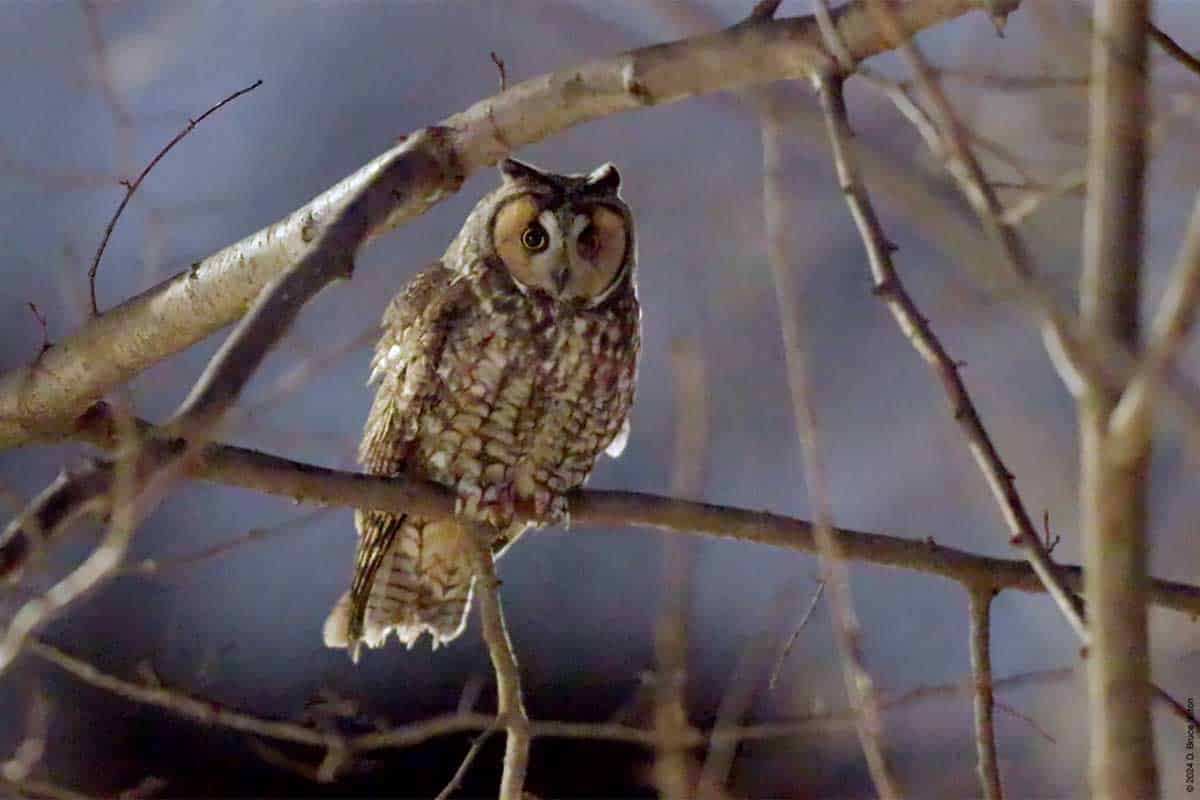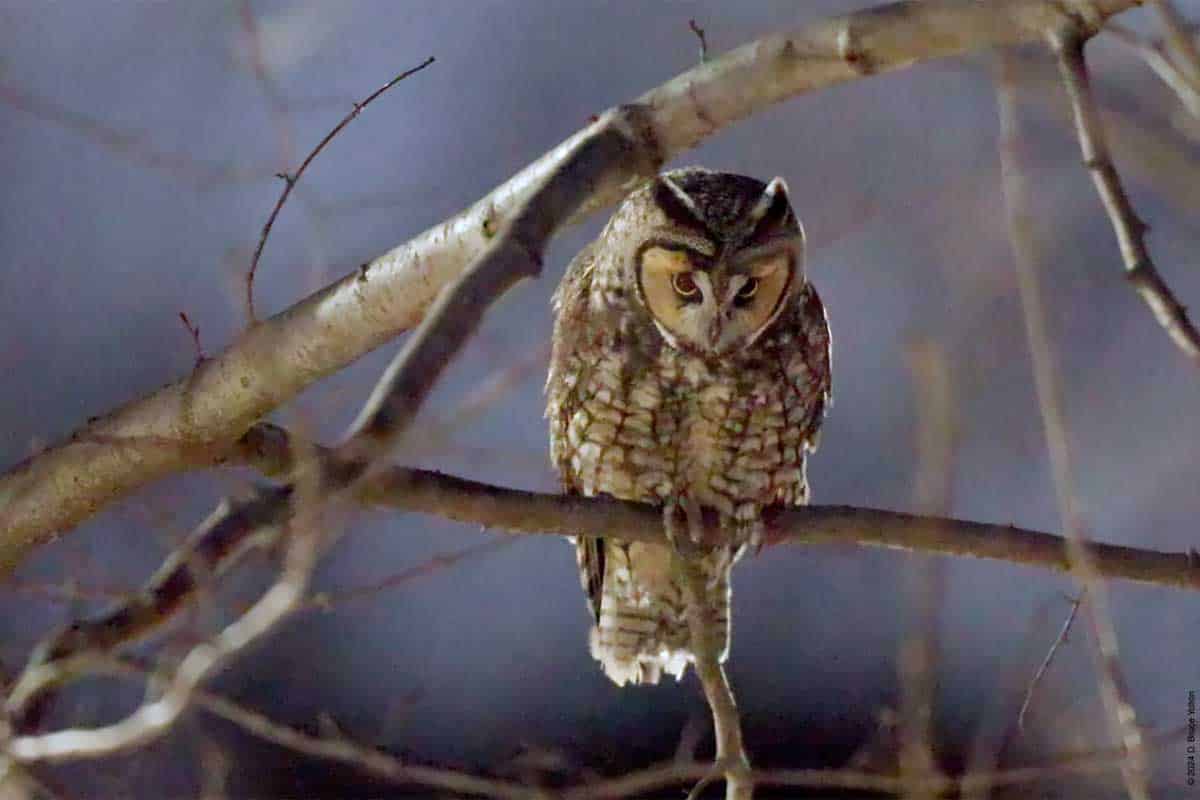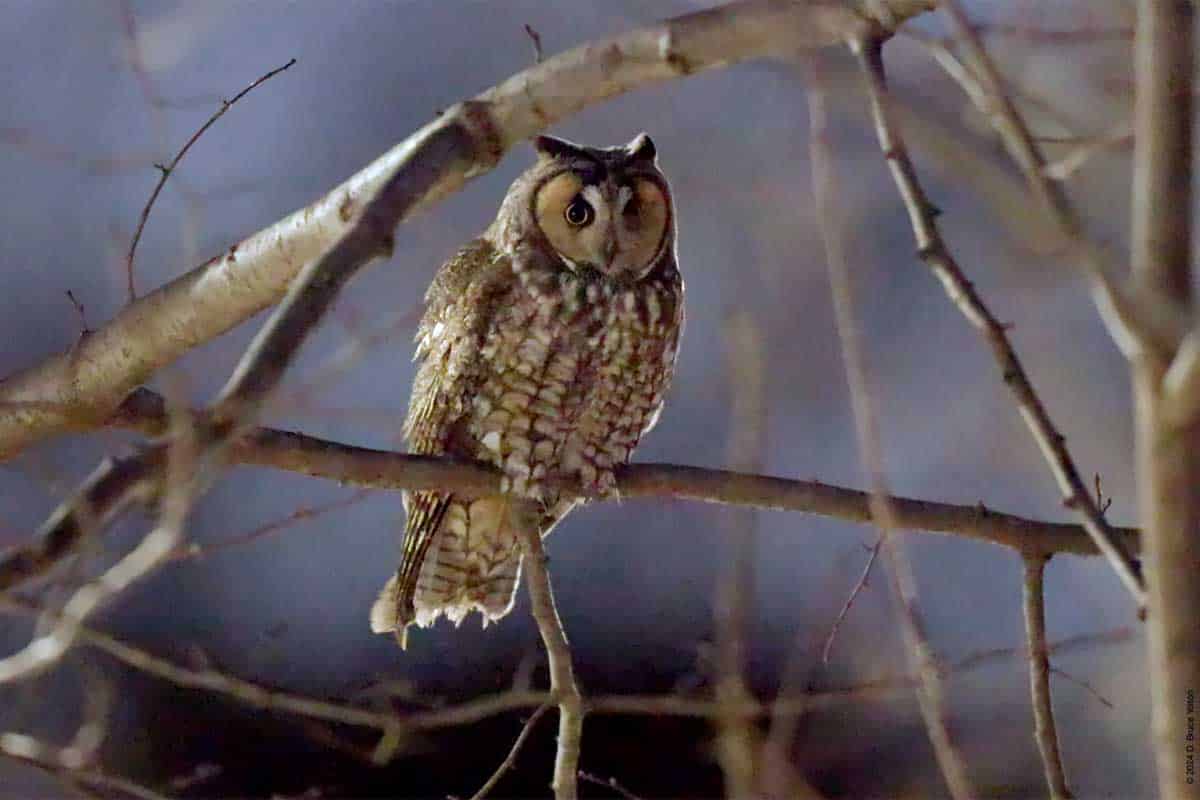Long-eared Owls XIII, Sunday 2/25/24
Sunday was the last day, I saw the remaining Long-eared Owl. There was a fairly standard fly out, a hunting run on the ridge between the Compost Heap and the Nursery, a flight to a tall tree, and then to the ground. We did hear a bird, but I think it might have been an early migrant avoiding the owl, and not the owl itself. It was hard to tell.
We had almost a month with at times two but mostly one Long-eared Owl. Careful, respectful owl watching allowed us to learn their habits and behavior. I was surprised by how low they hunted both from small trees and from the ground. May each of their trips back to their breeding grounds be a safe journey.
